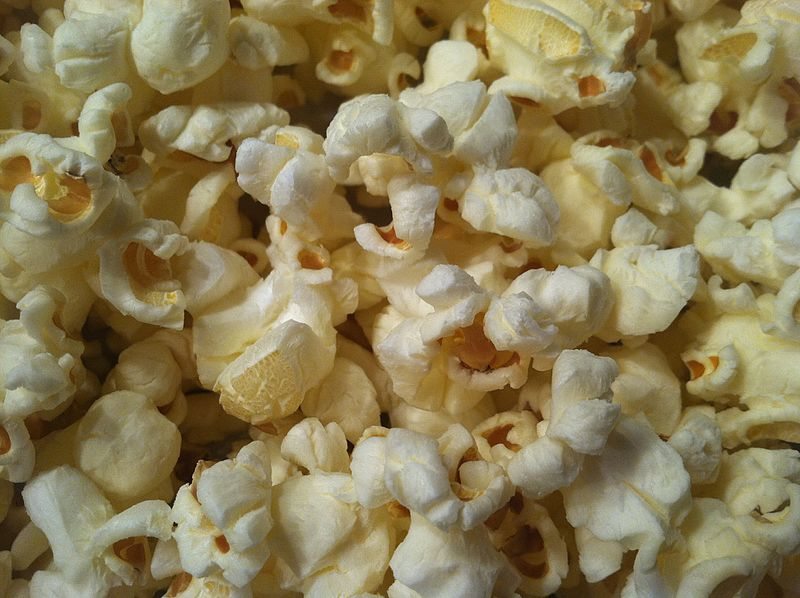Why do we eat popcorn at the cinema?
The other night, I was the cinema watching a quiet film, and the atmosphere was absolutely ruined by the fact that the two people in front of me were very noisily eating popcorn. As I left the cinema, it got me thinking – why is popcorn the food that we associate with a trip to the movies? It’s loud, messy, really distracting, and in every way counterintuitive to actually enjoying yourself in the cinema, yet many people’s movie experience wouldn’t be complete without a bucket of popcorn to snack on while they’re watching a film. How did popcorn become cinema’s fundamental snack?
The story of popcorn as a cinema snack began in America – the corn had existed for about 8,000 years prior, but it arrived in North America in the early 9th century, most likely transported by North American whalers who found them in Chile. Eaters found the act of popping corm to be very entertaining, and the snack was prevalent enough to be included in the Dictionary of Americanisms by 1848. It was everywhere, and one of the key reasons for its popularity was its mobility. The first steam-powered popcorn maker was invented in 1885, and made it easy to produce popcorn on the go without needing a kitchen. The popping of corn also produced an appealing smell, which vendors used to their advantage.
Popcorn was almost everywhere, except for one now-ironic place – the movie theatre. According to Andrew Smith, author of Popped Culture: A Social History of Popcorn: “Movie theatres wanted nothing to do with popcorn,” Smith says, “because they were trying to duplicate what was done in real theatres. They had beautiful carpets and rugs and didn’t want popcorn being ground into it.” They wanted a highbrow clientele, and the distracting noise of snacking was not on the agenda. Even when sound emerged in 1927, massively expanding a cinema audience beyond just the literate, theatre owners were still hesitant to allow brings.
Things were changed by the impact of the Great Depression. Audiences flocked to the movies, and popcorn was cheap yet luxurious. Popcorn sellers could buy a big bag of popcorn that would last years, and make them a load of money on a comparatively small investment. Street vendors would wait outside the cinema, selling popcorn to moviegoers, and some theatres had signs requesting that patrons check their popcorn with their coats.
But gradually, cinemas recognised the financial worth of popcorn – they began by establishing agreements with popcorn sellers, letting them sell the snack in cinema lobbies for a daily fee, a win-win arrangement for everyone. Cinema bosses soon realised, though, that their profits would surge if they cut out the middleman and sold popcorn themselves. Popcorn and snacks helped a lot of cinemas survive the Depression – concessions became the ticket to higher prices. And this relationship was further consolidated by World War II, as rationing cut off many traditional sugary rivals. It was at this time that popcorn became fully linked with the cinema, and this connection lasted in the cultural imagination long after popcorn sales and cinema attendances started to decline with the rise of television.
Popcorn is a good snack from the cinema’s point of view because it has a giant profit margin and it can be made easily, while audiences can appreciate a simple practical snack. Such is the connection that now, even when we watch films at home, popcorn is a go-to snack – there are few examples anywhere of a cultural activity being so inextricably linked with a foodstuff, and as the trend migrated across the world, it’s likely this is a link that will exist as long as cinemas do.

Comments